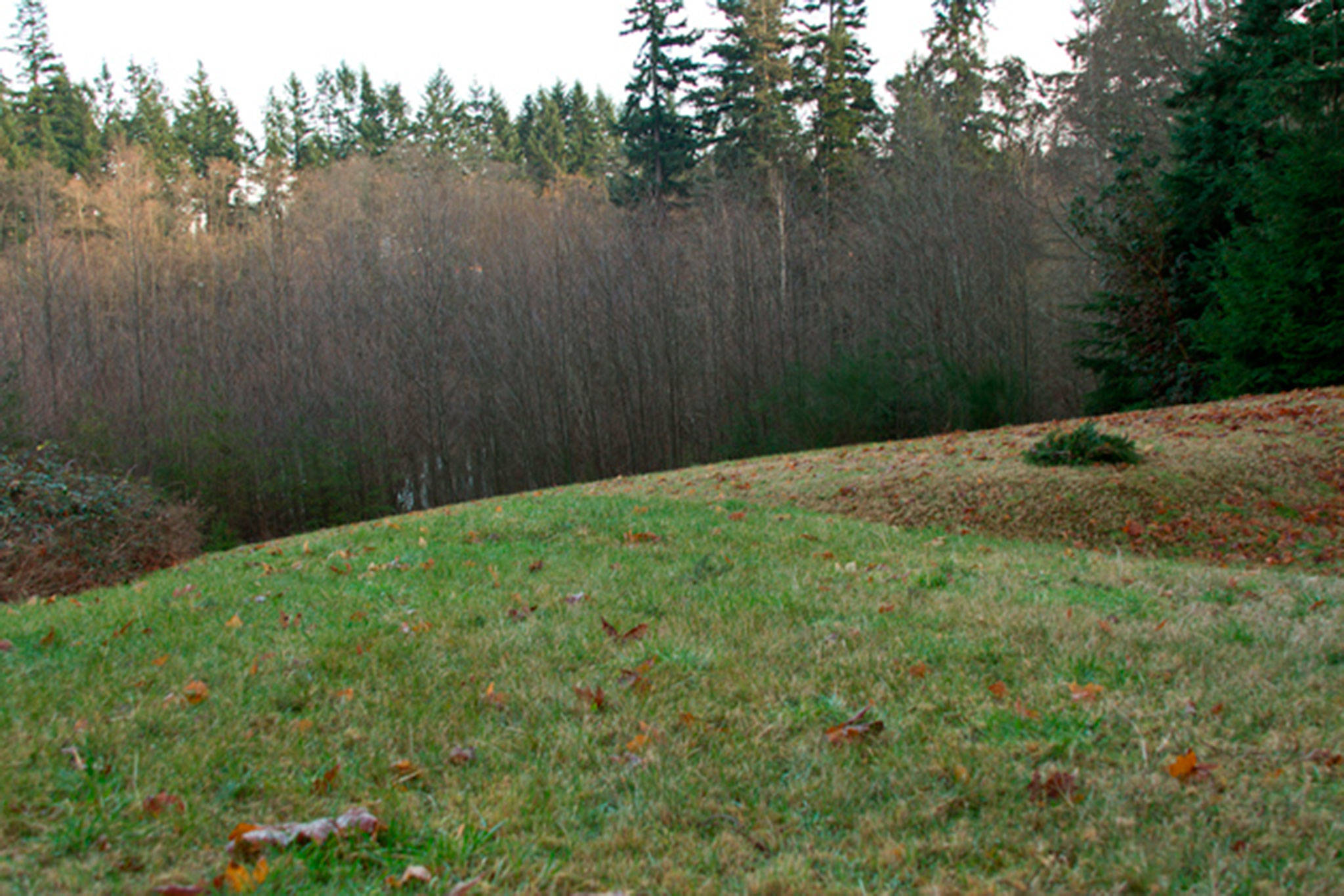Islanders are getting a clearer picture of what can be built at Sakai Park. And the answer is looking like: not a lot.
When the Bainbridge Island Metropolitan Park & Recreation District purchased Sakai Park’s 22.83 acres in 2015 for $5.9 million, many residents on the Rock started talking about what they wanted to see built on the property.
After deferring to eight study groups and an island-wide survey, the park district had a list of 10 things that islanders wanted to see at the new park. Playgrounds, a community recreation center and a 50-meter pool were just a few of the larger items from the list.
But now it seems that only a sliver of the nearly 23 acres can be built on.
Just 6.1 acres at Sakai are able to be developed due to nearby wetlands, officials said, and of those 6.1 acres, only 2.1 acres can sustain impermeable development, such as concrete and asphalt for parking lots and pools.
According to Johnpaul Jones, an architect with Jones & Jones, not everyone will be able to get what they want out of the property.
“If you try to put everything on there, you can’t do it,” Jones said.
“The land there tells us some important things and we need to be respectful of that. If we’re not respectful it will come back to hurt us later on, as a community and a region,” he warned.
It appears in the case of Sakai Park that the land is being rather picky about what and where it wants developers to build.
“Basically over half the site we can’t build on,” Jones said at a recent park planning meeting.
While the site’s proximity to a wetlands is a major roadblock that prohibits hard-surface construction on more than 90 percent of the site, stormwater dispersal is also proving to be a major thorn in the project’s side.
Duane Dietz, a landscape architect with Jones & Jones, explained that the hardpan soil below Sakai’s pond and wetlands is so impermeable that it would take 1,000 hours for 1 inch of water to pass through. Because of this impermeability, a cap has been placed by the Department of Ecology on how much hard surface construction can be done on the property. Excessive hard surface construction will disperse additional water toward the wetlands and risk flooding, erosion and other damage to the ecosystem.
The project will not be able to build more than 93,000 square feet of hard surface on the site without rapidly incurring expensive costs to redirect or store the stormwater, officials noted.
Just to build the 93,000 square feet of hard surface, stormwater costs are estimated to run between $600,000 to $700,000. Redirection of the stormwater away from the wetlands — should they exceed the 93,000 square foot target — is estimated to cost between $250,000 and $500,000. Building detention infrastructure were estimated to cost between $90,000 and $100,000 per each additional 10,000 square feet as well.
Advocates hoping for a larger pool cite lack of adequate space at the existing Bainbridge Island Aquatic Center and want a facility which could provide 20 or more lanes for lap swimming and also allow Bainbridge to hold more swim meets and games for competitive swimmers.
Early project designs for a 50-meter-by-25-yard, eight-lane pool came in at 16,428 square feet above the 93,000 square foot target. Only after downsizing the pool design to 25 meters by 25 yards and eight lanes did the plan meet the 93,000 square foot target (with an additional 9,404 square feet to spare).
It wasn’t just advocates for a bigger pool who are pressing for new amenities at Sakai.
Julie Riely, chairwoman of the Bainbridge Community Tennis Association, said that Winslow needs more tennis courts within walking distance of downtown that are available throughout the year.
“In the high school season, there are no tennis courts for three months,” Riely said. “Our complaint is that in the city area… around Winslow there are no tennis courts, no public tennis courts that can be used all the time.”
Islanders who want to play tennis at any time throughout the year have to drive out to Battle Point Park or Strawberry Hill Park, she said.
“With Winslow’s density growing, what we’re looking at is planning for the future: Tennis courts that people can walk to that are available all year long,” Riely said.
Responding to calls for walkable, centralized tennis courts and a bigger, better pool, Jones referred to the constraints of the property.
“Something is going to have to give to keep us within the range here,” Jones said.
The Jones & Jones team concluded the meeting by assuring those in attendance that their voices had been heard and they will take their recommendations into consideration.
“We’ll take all of this into account,” Jones said.
“We’ll dance our way through this and hopefully by this fall we’ll have this thing together. And hopefully it answers a lot of questions that people are raising,” he said.



